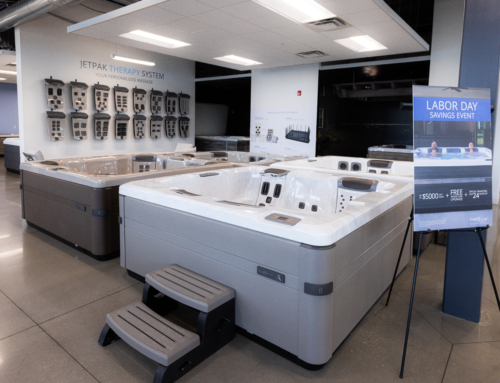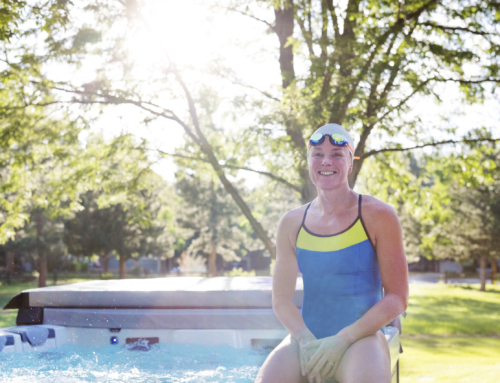It’s been said time and time again that compensation must be set up to optimize employee motivation. After all, it’s this motivation that will drive sales. But what happens when compensation plans are set to drive performance but an employee is still struggling with motivation?
Progressive spa retailers realize that they can coax better performance from their sales teams by treating each individual person as, well, individuals. Though this means designing motivation structure that is more multi-tiered than the traditional comp plan and devoting more attention to individual performance, the extra cost and effort are well worth it once benefits are fully realized.
If you want to boost sales, your compensation plan must include incentives so each salesperson, no matter where on the performance curve he or she falls, responds positively.
The truth is that not all salespeople are created equal. Some salespeople have greater drive and motivation than others, and a growing body of research shows that most salespeople fall into one of three categories: laggards, core performers, and stars. Individuals of each category are motivated by different facets of a comp plan. For instance, stars are motivated by commission, prizes, and other incentives but stop excelling when ceilings are imposed. Laggards, on the other hand, are motivated by social pressure and quarterly bonuses, while core performers are motivated by multi-tier targets, sales contests, and flash bonuses.
Motivating Laggards
Laggards are usually comprised of new hires, older salespeople who have become complacent, and individuals who are simply less talented in the sales department than others. However, studies suggest that even laggards’ performance can improve when the right incentives are in place. The following are just two strategies that have been proven to move laggards in the right direction along the sales curve:
Social Pressure
Laggards respond well to two types of social pressure: natural social pressure and program-induced social pressure. Natural social pressure occurs when managers have a constant pipeline of new, high-quality talent. This is also referred to as the “man on the bench” approach and is similar to tactics used by coaches of sports teams. The lower performing salespeople are given low-traffic areas, while the core performers and stars are given areas with the most amount of traffic. When new, high-quality talent is given the better areas, older, low-performing employees are motivated to try harder so as not to be outdone by new hires.
According to Harvard Business Review, districts that utilize this approach outperform those that don’t by about 5%. The results also show that the greatest increase in performance takes place in the laggard group and that the revenue gained far outweighs the cost of retaining high-quality talent on a continual basis.
Well-designed programs heighten star performers' sense of responsibility and motivate them to help laggards out while at the same time avoiding demoralizing poor performers.
Program-induced social pressure works like programs implemented by grade school teachers and involves posting each person’s performance for everyone to see. This type of program can be implemented in a number of ways. For instance, some retailers post sales numbers in ascending order, from worst performers to best. Others incorporate both natural social pressure and program-induced social pressure and have a “bullpen” that lists each of its salespeople into one of three categories: penalty box, benchwarmers, and star performers.
If you do choose to use program-induced social pressure, it’s important to keep in mind that the goal is not to embarrass laggards, but to motivate them. Well-designed programs heighten star performers’ sense of responsibility and motivate them to help laggards out while at the same time avoiding demoralizing poor performers. These types of programs also serve to motivate core and star performers, as they play to salespersons’ competitive instincts.
Pace-Setting Bonuses
Many companies offer strictly annual bonuses, but studies suggest this may be a huge mistake. Results of a current study reveal that quarterly bonuses are far more effective than annual bonuses, and that salespeople become unmotivated when their rewards are so far away. In fact, annual bonuses have a tendency to decrease sales performance by as much as 10% for laggards, and by between 2% and 4% for core performers and stars. In short, everyone suffers when retailers only offer annual incentives.
Motivating Core Performers
Core performers represent the largest part of the U.S. salesforce and companies cannot succeed without them, yet they’re the exact people that businesses often neglect. However, core performers have the potential to become stars with the right motivation. If you want to watch your main salespeople grow and exceed expectations, consider using multi-tier targets and prizes.
Multi-Tier Targets
Core performers are always in competition with themselves and are not happy if there is a target before them that they have yet to attain. Appeal to these salespersons’ competitive nature and give them multiple targets to work toward. For newbies, make the first target a number that the majority of the company’s salespeople historically attained. The second target should be a number that a small percentage of the company’s sales agents have obtained, and the final target should be one that only a select few have ever reached.
Research has shown that quarterly bonuses are far more effective than annual bonuses.
Even if a target seems impossible to reach, core performers will have fun simply striving to reach it. They will even get a kick out of seeing who gets the closest, making for an incentive that never really ends.
Prizes
If implemented incorrectly, this type of incentive program can backfire, and if you’re not careful in how you select prizes, core performers may not be engaged by prizes simply because they know that the stars will win and therefore, get the better prizes. Because of this, they won’t bump up their own efforts. If you want to engage core performers, you need to design a prize structure that contains gifts everyone will be satisfied with and appear equal at all levels.
For instance, say you make the grand prize a golf outing at a fancy, out-of-state resort and the second-tier prize a staycation at a local inn. Both prizes are different yet equally desirable. However, the golf-outing clearly costs more, making it a sufficient reward for the top salesperson.
Motivating Stars
Ideally, your spa retailing compensation plan should favor star performers, as they are the salespeople you want all your sales agents to strive to be. However, too many businesses cap prizes and commissions to save on costs, tactics that deter star performers rather than help motivate or even retain them. Like core performers, star performers are motivated by targets and competition, but if targets are too easy to reach, or if goals are capped, stars will become complacent and even lazy after a while. For stars, your compensation plan needs to include incentives that never end.
No Caps on Commission
Stars are most driven by money, so one of the biggest mistakes retailers can make is to limit earning potential. One study revealed that ceilings on commission encouraged top performers to always keep their sales under the ceiling simply so they could have a goal for which to strive. That same study showed that when the ceilings were removed, however, sales made by star performers increased by 9%.
One study revealed that ceilings on commission encouraged top performers to always keep their sales under the ceiling simply so they could have a goal for which to strive.
Many companies use ceilings to control costs, but ultimately, they’re hurting themselves as ceilings just serve to keep their best salespeople from making more sales towards the end of a pay period.
Overachievement Commission
Overachievement commissions kick in when a salesperson reaches a certain quota and tend to work even better than no caps on commission. For instance, say the average star performer sells $75,000 worth of spas and accessories each year. You may opt to kick in an overachievement commission for sellers who reach $100,000.
Overachievement commissions are typically double than the regular commission rate. Studies suggest that companies who do not use overachievement commission incentives sell up to 17% less than those that do, suggesting that overachievement commissions are one of the best incentives for top performers.
Career Development and Purpose are Equally Important
While work-life balance is essential to employee acquisition and retention, salespeople are as equally motivated by the prospect of a raise or promotion. Moreover, many people perform better when they feel as if they are a part of the greater whole, which may be why the profit sharing model works so well. When employers provide opportunity for advancement, their workers will feel more inclined to do better in the hopes that they will be promoted.
If an employee is allowed to become stagnant, bored, overlooked, or underappreciated, he or she is likely to actively seek employment elsewhere
However, if an employee is allowed to become stagnant, bored, overlooked, or underappreciated, he or she is likely to actively seek employment elsewhere. For this reason, it is crucial for spa dealers to invest in ongoing training programs, skill development, and team-building exercises. Employers should also take the time to review salespersons’ performance and provide constructive feedback.









Leave A Comment